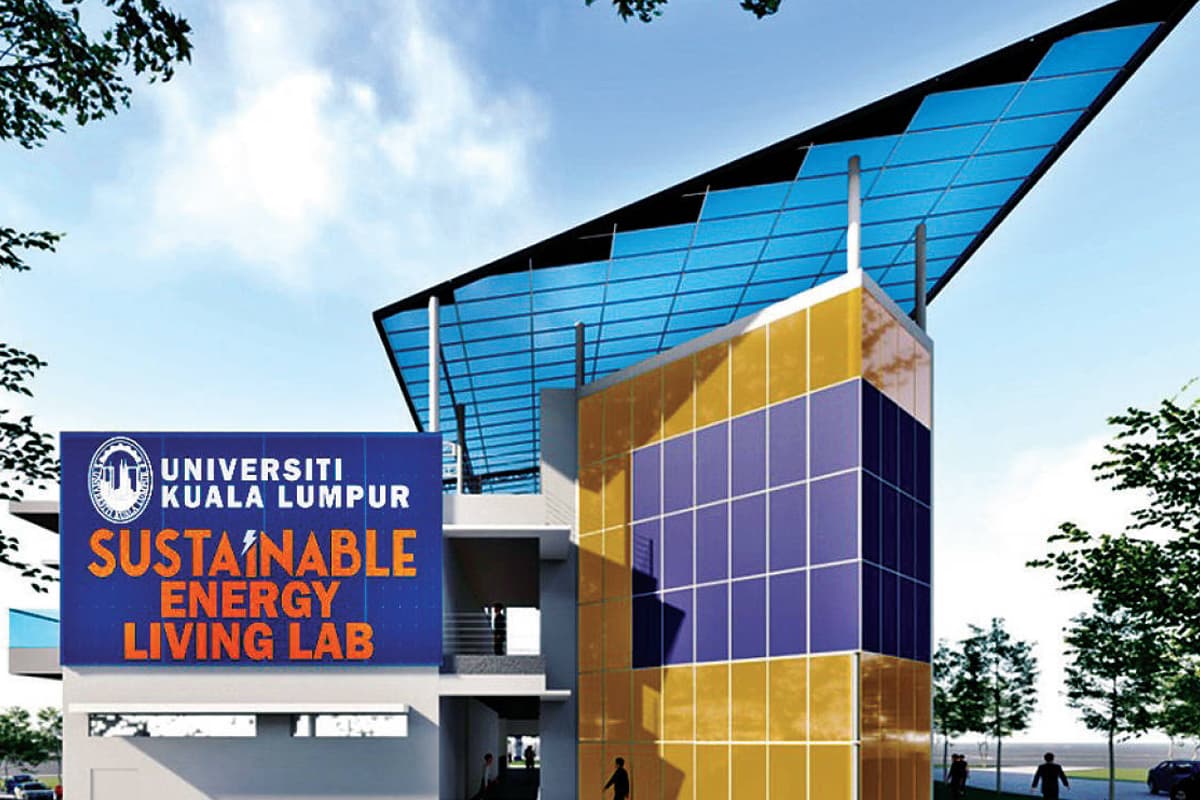
This article first appeared in Digital Edge, The Edge Malaysia Weekly on October 17, 2022 - October 23, 2022
The term “net zero” has become a popular phrase as almost all industries are aiming to reduce their carbon emissions by using solutions like energy-efficient equipment and solar power systems. The building and construction industry is no exception.
According to the World Green Building Council, the sector is responsible for 39% of global carbon emissions.
In Malaysia, industry players like IEN Consultants Sdn Bhd are hoping to take it a step further by creating net positive buildings. This means that the building generates more renewable energy than it needs. IEN Consultants is attempting to achieve this goal with Universiti Kuala Lumpur (UniKL) at its Gombak campus, where it is constructing a new building.
“We pitched the idea for a Sustainable Energy Living Lab [in the new building] to UniKL. [Let’s] make the building itself a research subject,” says Gregers Reimann, managing director of IEN Consultants.
The company is known for its green building projects, such as Menara Kerja Raya, which was awarded the Green Building Index (GBI) Platinum final certification, and the Paramit factory in Penang, which achieved 45% energy savings by integrating natural daylighting systems and biophilic designs.
The Sustainable Energy Living Lab is expected to be completed in 2023. Its roof is fitted with a semi-transparent 168kWp integrated solar photovoltaic (PV) system. This system is expected to produce twice as much energy (220MWh/year) as the building consumes (106MWh/year).
The solar panels are installed on the roof and façade of the building. This is unique because most solar panels in Malaysia are only installed on the roof. The printed solar panels installed on the façade are the first of their kind in Malaysia, says Reimann.
The logo and name of UniKL in front of the building are made of a printed solar panel, which is a relatively new technology that is being used for the first time in Malaysia he adds. This technology allows more surfaces to be covered with solar panels and generate energy. “Solar panels can now be printed. So, you can basically snap a photo and have your own face [printed on a solar panel].”
Another factor that sets the building apart is the use of energy storage systems.
“Since the building produces twice as much energy as it consumes, some of the excess energy produced will be stored in three energy storage systems in the building for use during the night time and rainstorms when there is no electricity production from the solar panels,” says Reimann.
The three energy storage systems are thermal storage, a thermally-activated building system and electric battery storage, which is the biggest. The solar panels will charge the lithium-ion batteries with an electrical capacity of 384kWh during the day and discharge at night. The surplus electricity generated will be used by other buildings on the university campus.
“The building has the flexible demand response needed for the future electric grid powered not by fossil fuel power plants but by fluctuating renewable energy sources, such as wind, solar and hydropower,” he says.
Energy storage is not commonly integrated into buildings because it can add to the initial cost of the building. But in the long run, Reimann believes that it will be economical.
The Sustainable Energy Living Lab project is expected to cost RM12.9 million. The energy storage system represents around 8.5% of the entire construction cost, according to Reimann.
The overall energy demand of the building is also lower due to its design. Light shelves, which are passive architectural devices used to reflect natural daylight into buildings, are employed. This provides adequate and glare-free daylight for most of the day without the need to use electric light bulbs. The corridors are designed in a way that they are naturally ventilated, thus reducing the use of air conditioners.
“This is a building designed to have 51% lower energy consumption than a normal building, according to the Malaysian Standard MS1525,” says Reimann.
Is it very expensive?
Being sustainable can have a reputation for being expensive. But this is not always the case, says Charles Loo, an associate at IEN Consultants.
“The prices [are], for sure, going down. For instance, 10 years ago, solar panels used to be [around] RM15,000 per kilowatt. [But] now, you can install it for RM4,000 [for the same unit of energy]. It’s almost a no-brainer for factories that have enormous roof areas to install PV solar panels [because they are accessible and affordable now],” Loo adds.
This applies to energy-efficient equipment as well.
“Energy-efficient products like LED lights are getting so much cheaper now. LED bulbs used to be RM50 each 10 years ago, and now it’s like RM15 each.”
Companies that are interested in green buildings can leverage the government’s green incentives; two examples being the Green Investment Tax Allowance and the Green Income Tax Exemption. These incentives have been extended until 2023. There is also the Green Technology Financing Scheme 3.0.
“These grants will extend some help to SMEs [small and medium-sized enterprises] in the construction industry to incorporate green technology, buy energy-efficient products and promote energy-efficient building designs,” says Loo.
Save by subscribing to us for your print and/or digital copy.
P/S: The Edge is also available on Apple's AppStore and Androids' Google Play.

